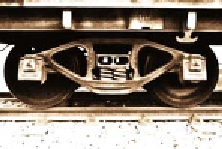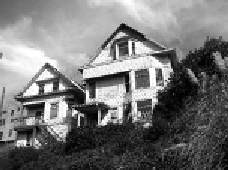Information Technology Reference
In-Depth Information
In the work described in this chapter, we il-
lustrate the construction of MusicStory. MusicS-
tory is an autonomous music video creator that
takes an audio file (such as an mp3 or wma file)
as input and outputs a music video file (MPG, or
mpv). The music video is created by finding links
between the audio file and associated image and
text documents. The approach we take is hybrid
and autonomous. Many approaches in music
information systems, or information systems for
that matter, use task constraints to limit the scope
of the problem at hand to provide a more tractable
solution. In building MusicStory, an autonomous
music video creator, we identify the task as what
defines the domain. Its constraint is the starting
point, a single audio file. Using this file as a search
key, MusicStory finds, and collects all the neces-
sary files to create a music video. This approach
is hybrid as it uses both audio and the metadata
text to build a complete photo narrative. It is also
autonomous because the user simply selects the
audio document for which to build a video and
clicks “go.” MusicStory then creates the music
video, without any need for text querying by the
user. Figure 1 shows an example of a created
photo narrative from MusicStory.
In this chapter, we first discuss several similar
music video creation systems, then turning to our
music video creator, we identify several compo-
nents needed to make a music video, autonomous
or otherwise. Next, we discuss how to search and
find the necessary supporting media for the video
track as well as discuss features of the source audio
and how it can be used in music video creation
and how it can be found autonomously. Finally,
we discuss how to make the final composition.
Background
network arts
In 2004, Shamma, Owlsey, Hammond, Brad-
shaw, and Budzik began working with autono-
mous photo narrative generation using various
video sources using images found from online
communities. They codified installation pieces
that form linkages between video and image
sources available on the Internet as “Network
Arts.” These installations place the computer
as a reflector of popular culture. Moving away
from the traditional role of a computational tool,
Network Arts fuses art and the Internet to expose
cultural connections people draw implicitly but
rarely consider directly. Creating new media ex-
periences using World Wide Web as a reflection
of cultural reality to highlight and explore the
relations between ideas that compose the fabric
of our daily lives. The first Network Arts instal-
lation,
Imagination Environment
(see Figure 2)
reflects these links back to us; from the virtual
world into the real. Using any video stream as
its starting point, it discovers images linked to
the words being said, and shows us the flow of
connections between ideas and images that we
ourselves crafted. Exploiting the connectivity of
Figure 1. Salient Flickr Images found from the lyrics of a Radiohead song
Street Spirit (Fade Out)
. “Rows
of houses, all bearing down on me”. Flickr Photos from left to right by: Locutis, brappy!, Jan the mason,
and yoppy. Used under Creative Commons licensing: see endnotes 1-4 for more photo details.




Search WWH ::

Custom Search